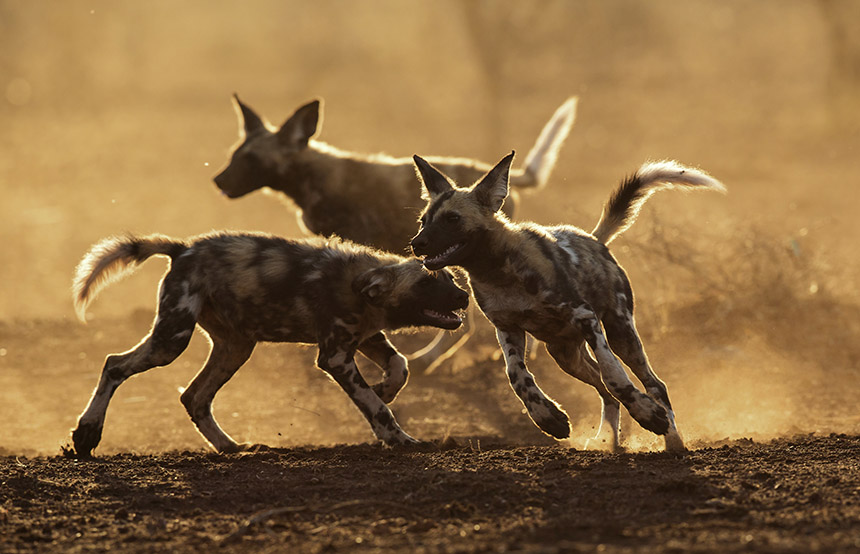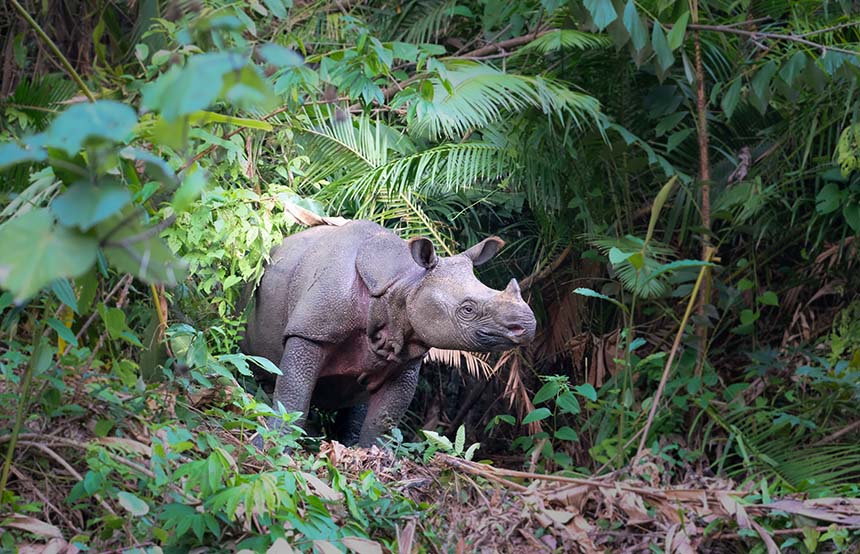When imagining a rainforest, you may picture dense undergrowth filled with parakeet-green leaves, flowers in exotic hues and thriving wildlife; with the African plains, it might be the gracefully plodding elephants, trundling rhinos, and excited safari goers. Or when thinking about coral reefs, your mind might conjure images of vibrant corals and rainbow-coloured marine creatures. These ideals may be true in some cases, but deforestation, over-exploitation and climate change are just a few of the reasons why many of these habitats are not the utopias that they once were, particularly for the animals that live there. We are firm believers that conservation and travel can work hand-in-hand to help protect the world’s most endangered animals and their habitats. So whether you want to get directly involved in wildlife conservation, or just want to explore and learn, our experts are here to help. Below are our some of our favourite endangered animals and how you can support them while still embarking on a holiday like no other…
African Wild Dog
Southern Africa
The swaying tussocks of golden grass that fill the arid plains of southern Africa are the perfect hiding spots for African wild dogs, an iconic and elusive animal on any southern Africa safari. Their mottled, autumn-leaf-coloured coats gave them the nickname ‘painted dogs’ but they are also known as Cape hunting dogs due to their fierce nature (think the hyenas in The Lion King, but more ferocious). It is this talent that has led to their endangered status, as it turns out lunching on livestock does not go down well with local farmers. While exploring the wonders of the southern African grasslands, learn about these amazing animals from your expert guide or even help build a boma (livestock enclosure) to reduce the risk of livestock becoming a wild dog’s dinner.

Ganges River Dolphin
Ganges River, India
These prehistoric looking, Pinocchio-nosed river dolphins have lived happily in the Ganges River in India for over 12,000 years, but now they are in trouble. The health of the river is declining, with too much water being taken for irrigation, pollution filling its waters and habitats being destroyed. However, while in India you can take a trip down the Ganges on a private boat tour from Varanasi, watching the hustle and bustle of local life drift by, while keeping your eyes peeled for these pebble-coloured creatures. Visitors are asked to log dolphin sightings to help the conservation efforts keep the thriving, albeit tiny, population of Ganges River dolphins alive.
Bornean Orangutan
Borneo, Malaysia
The lush, verdant rainforest is alive with the hum and bustle of tree frogs, tropical birds and chirping insects, but it is the grumbles, squeaks and raspberry sounds of a Bornean orangutan that you are keeping an ear out for here. Hop aboard a boat tour up a remote Bornean river or take a guided trek into mist-covered mountains to find these shaggy-haired great apes. Logging and hunting have threatened these creatures beyond belief, with the population decreasing by 50% over the past 60 years, so now is the time to help. Head to the Sepilok Orangutan Rehabilitation Centre where you can get a closer look at these amazing creatures before adopting one of the fuzzy orphans, or taking part in their ‘Regrow Borneo’ program to increase the habitat’s biodiversity.
Javan Rhino
Java, Indonesia
With only 65 of these prehistoric-looking creatures left in the world, the Javan Rhino is one of the world’s most endangered animals, and seeing one would be a once-in-a-lifetime opportunity. The Ujung Kulon National Park is their only habitat, and it sits in sight of the smokey haze that billows from Krakatoa Volcano. With a maze of canals and swampy wallows, this national park is the perfect place for these dinosaur-like animals to live, as well as for you to explore. So why are they not thriving? The Arenga palm is a fast growing, dominant tree that is choking out the native species, including the rhino’s favourite foods, leaving the population rapidly declining. Head out with a guide and explore the area, while keeping an eye out for these invasive palms so they can be noted and removed, creating more space for one of the world’s most endangered animals to continue to survive.

Galapagos Penguin
The Galapagos Islands, Ecuador
The caves and crevices in the Galapagos’ coastal lava used to brim with these tiny aquatic birds, however there are now fewer than 2,000 left in the world, so they are little more elusive these days. Take time exploring the wonderfully rugged coastlines of Isabela and Fernandina Islands, while listening out for the Galapagos penguin’s distinctive honking bray. The crystal-clear waters of the Eastern Pacific can be dotted with the bobbing heads of these sweet flightless birds. The Galapagos penguin conservation team has asked that visitors take photos of the penguins to help strengthen data, so get snap happy and help to protect another of the world’s most endangered animals while on holiday.
Written by Immy Kelly
